Why does dill turn yellow and what to do?

Many summer residents who grow greens on their site often face such a problem as yellowing of dill leaves. At the same time, the plant may not grow, dry out and curl. Because of what this can happen and what to do about it, we will tell you in our article.
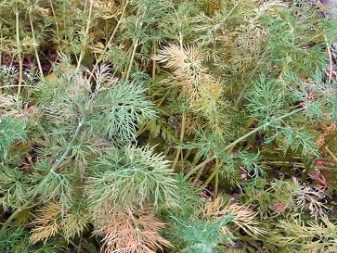

Improper care
Most often, yellowing of the leaves is noted if the gardener does not properly care for the crop.
Failure to follow the watering schedule
Improper watering is one of the reasons why dill growing in a garden bed (as well as on a windowsill or in a greenhouse) turns yellow, reddens, or even turns red. Many treat dill as a weed plant, which is why they believe that it can grow in any conditions, but this is not the case. Dill, like most cultivated plants, has a negative attitude to the lack of moisture, which is especially reflected in the state of tall and bush varieties. Usually, with a lack of water, dill turns yellow, dries, begins to deform, curl and curl, and also loses its juiciness. To cope with this problem, you just need to adjust the irrigation regime, focusing on the weather and temperature.
However, it is worth noting that an excess of moisture can also be harmful to the plant. A large amount of water can cause the development of a fungus, which, in turn, will lead to the yellowness of the plant and rotting of its root system.
In addition, a large amount of water can wash out the minerals necessary for dill from the soil, which will also not benefit the plant.
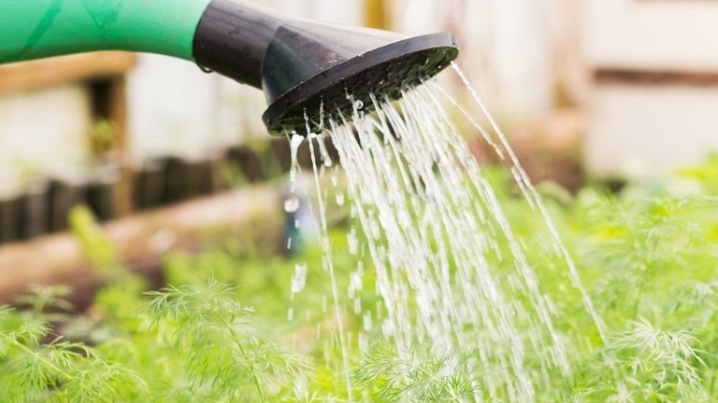
Poor soil composition
Bad soil is another reason why problems can arise with both young and adult dill, because a plant requires a large amount of fertilizer for full growth. Most often, the cause of yellowing lies in the lack of nitrogen fertilizers. To solve this problem, the plant simply needs to be fed, and it is best to apply complex fertilizers, which contain not only nitrogen, but also other substances useful for dill. However, when planning to fertilize the soil, do not overdo it, because it can also harm dill.
Note that dill grows poorly even in conditions when the soil is highly acidic and filled with alkali. It will not develop too well in heavy soil. Therefore, if the dill has turned yellow and began to lag far behind in development, it is bad soil that can serve as the reason.
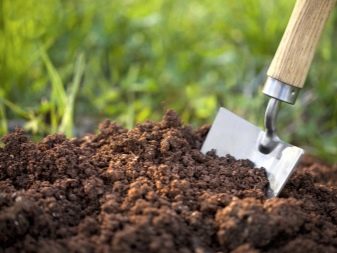

Bad conditions
Improper growing conditions can also have a negative impact on the plant, as well as cause it to not germinate. So, the plant may simply not have enough lighting, because it is necessary for the high-quality growth of dill. Moreover, lighting is very necessary so that the process of photosynthesis in dill cells proceeds normally and is not disturbed. Ideally, dill needs about 16 hours a day to grow strong and healthy. Otherwise, the culture will develop poorly, and its stem part will be too thin.
Proper care is also important for the plant, without which it can wither and turn yellow. So, after the young dill has sprouted, you need to carefully ensure that there is a few centimeters of distance between the bushes. Otherwise, the plant will inhibit growth.Subsequently, dill withers, because in conditions of high density and density of plantings, plants will lack nutrients, in addition, thickening will begin to interfere with the circulation of air masses, which can provoke the development of diseases of fungal origin.
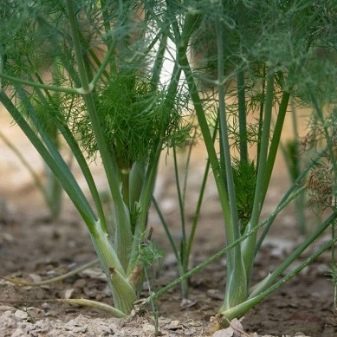
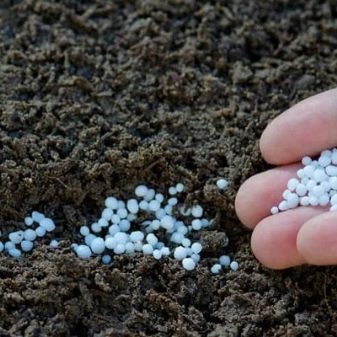
Diseases and pests
Various diseases and harmful insects can also cause dill to turn yellow, curl, dry out, and then die. To begin with, consider the diseases that most often precipitate this plant. Quite often, dill affects wet rot, which is caused by too frequent watering. It is because of this that the plant begins to rot from below, and its stem part turns yellow. As a result, dill disappears. To cope with this ailment, it is necessary to reduce the number of waterings to four times a week.
Verticillary wilting is often found in dill. This disease activates mainly in the middle of summer, affecting the root. This fungus lives in the soil, and it appears there due to the compost that is poorly decomposed in the soil. As a result, when the plant has umbrellas, it turns yellow and withers. It is worth considering that it is impossible to get rid of this disease, the plants can only be protected by annual disinfection of the soil.
Dill is often affected by a disease such as peronosporosis. This is a disease that is activated in conditions of high temperatures and excessive humidity. At the first stage, it causes yellowness of the dill foliage, then shoots and umbrellas begin to turn yellow. Eventually, the infected plants wither and die. You can cope with this disease with the help of a solution prepared according to a folk recipe. Take 20 grams of shavings of laundry soap, 25 grams of baking soda and mix with five liters of warm water. With this mixture, the plants must be treated twice, and if the disease has not receded, then the processing must be repeated.
Often precipitated by dill and powdery mildew. Because of it, it can also change color, starting to become covered with a light bloom. You can get rid of this fungal disease, but it is recommended to fight it even in the early stages, using special antifungal agents, which can be purchased at a specialized store for summer residents.
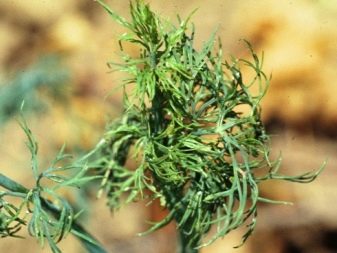
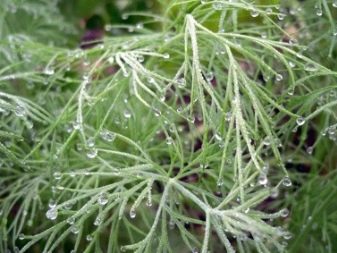
If we talk about pests, then most often dill is precipitated by aphids, and it begins to become more active mainly in June. This is a small, but very harmful insect, the size of which hardly exceeds a couple of millimeters. The color of this parasite can be different, but it is mainly light, black or green. This harmful insect actively sucks out nutrients, which causes deformation and wilting of the upper part of the dill. At the same time, if you carefully examine the affected plantings, you can see whole colonies of parasites on them.
It is quite possible to deal with this parasite. This can be done with the help of folk remedies, the main value of which is their harmlessness, economy and ease of manufacture. The most effective solutions are based on garlic, onions and dandelion tops. However, we note that solutions of this kind are effective only in those cases when the parasite did not have time to breed. Otherwise, it is better to use chemicals.
As a rule, chemicals are rarely used by summer residents. Such products are highly effective in combating harmful aphids, but they are very toxic and can harm both the plants themselves and humans. Therefore, when using chemicals, it is strongly recommended not to forget about personal protective measures. In the fight against aphids, agents such as Biotlin or Karbofos are usually used. Please note that you should not overdo it with the dosage of these drugs, because this can harm dill.
Before using the product, be sure to read the instructions on the back of the package.
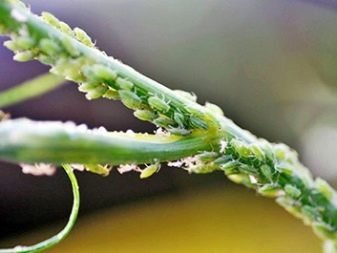
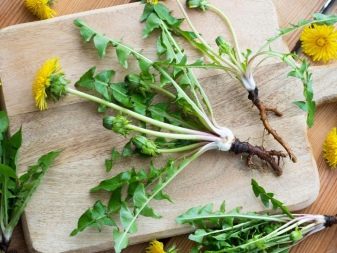
Prevention measures
Preventive measures help to avoid many of the problems associated with cultural planting. Let's consider the most useful tips:
- so, plants in the garden should be regularly inspected to identify problems in the early stages;
- be sure to provide quality care for dill, set up an irrigation regime and thoroughly fertilize the soil;
- get rid of weeds, because they are often carriers of parasitic insects and fungus;
- do not forget to remove old foliage from the site, as pests and fungal spores often hibernate under it.
Can yellow dill be eaten?
Yellow dill, if it has changed in color due to improper growing conditions, can be eaten, however, the taste and aroma of yellowed plants usually deteriorate slightly. But if the plant was affected by a fungus or parasites, that is, it is not worth using it for cooking.














The comment was sent successfully.